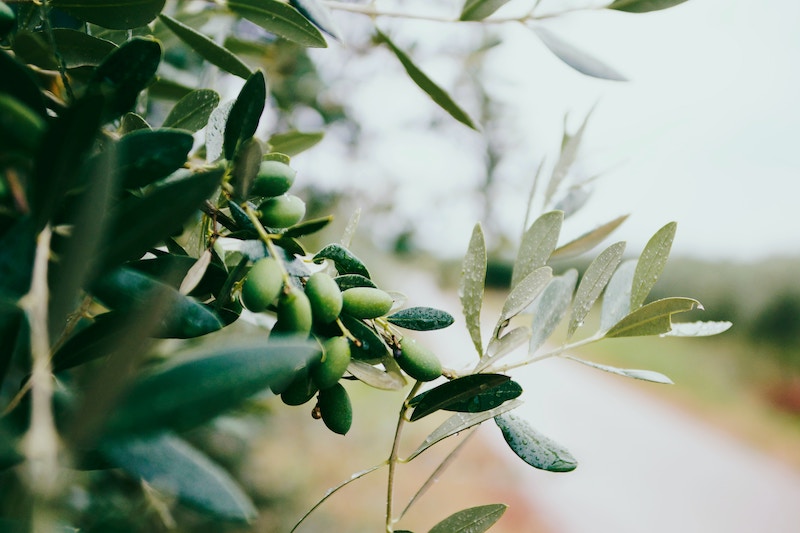In the picturesque region surrounding Lake Garda, there are two types of harvest that stand out – one famous for its globally acclaimed wines and the other, less known but equally valuable, is the olive harvest, which yields the precious green gold known as Garda DOP olive oil (Protected Designation of Origin). As you traverse the region between the months of October and November, it is likely that you will encounter entire families passionately engaged in this fascinating activity!
The scene that unfolds is a blend of tradition and modernity – nets carefully laid on the ground to catch the falling olives, single-pole ladders extending towards the heavens to pluck the highest fruits, and vibrating tools, a nod to technological innovation, used to dislodge the olives without causing harm to the trees. Amid this technological symphony, one element remains steadfast, much like the centuries-old olive trees themselves – the human touch. It is the hands, adorned with rakes, that gently coax even the most reluctant olives from their branches.
The Garda DOP olive oil that graces our tables daily is more than just a culinary delight. It embodies the love and dedication of the individuals involved in its production. It holds within it the laughter and shared moments of hard work. A testament to the continuity of a profound tradition that makes Lake Garda a truly unique and special place. It is the world-renowned Garda DOP extra virgin olive oil.
Garda DOP Olive Oil: the elegance of tradition
Garda DOP extra virgin olive oil is produced in the provinces of Brescia, Verona, Trento, and Mantova. The cultivation of olive trees on the shores of Lake Garda is deeply rooted in history, with ancient traditions that have been passed down through generations. The people of Garda have nurtured olive groves since Roman times, and their presence has been celebrated by notable writers such as Catullus, D’Annunzio, Goethe, and Carducci.
What makes Garda DOP olive oil distinctive is the unique combination of the region’s Mediterranean microclimate and the skills of the local olive growers. Garda DOP olive oil is, in fact, the northernmost olive oil produced in the world.
Garda DOP olive oil boasts the following features:
- Color: it ranges from an intense to a vibrant green-gold hue, thanks to the high content of chlorophyll.
- Aroma: the oil exudes a delicate and fruity fragrance that evokes the scents of the Mediterranean.
- Flavor: the taste is characterized by its soft and velvety texture, with a distinctive almond aftertaste that lingers on the palate.
The versatile nature of Garda DOP olive oil makes it a staple in kitchens not just around Lake Garda but also globally. Its mild and gentle flavor enhances a wide range of dishes without overshadowing the inherent taste of the ingredients.
Whether used in its purest form or for cooking, Garda DOP olive oil is the quintessential choice for seafood, white meats, carpaccio, salads, both raw and cooked vegetables, legumes, fresh and semi-aged cheeses. Its unique character also lends itself perfectly to dessert preparations, harmonizing beautifully with chocolate, sorbets, and ice cream.
Moreover, Garda DOP olive oil has found a place in the world of cosmetics. Its rich nutritive and moisturizing properties make it a sought-after ingredient in various skincare and wellness products.
The heritage of olive harvesting by Lake Garda
The practice of olive harvesting by Lake Garda is a tradition that spans centuries. It is a labor of love, deeply ingrained in the region’s identity. Families, generation after generation, have nurtured the olive groves, preserving the methods and techniques that make the Garda DOP olive oil unique.
As you wander through the groves during the olive harvest season, you can’t help but notice the nets spread on the ground, meticulously placed to catch the olives as they fall. These nets are an integral part of the process, preventing the olives from being damaged upon impact with the earth.
The scene becomes even more evocative as you observe the use of single-pole ladders, allowing harvesters to reach the tallest branches with precision. These ladders have been a timeless tool of the trade, an essential component of the artisanal approach to olive harvesting.
The modern addition of vibrating tools, designed to gently coax olives from the branches, is a testament to the adaptation of technology in this traditional process. These tools mimic the human touch, ensuring that even the most stubborn olives surrender to the soil without injury to the trees.
But, as the old saying goes, some things never change. In the midst of this evolving landscape, it is the human hands, guided by experience and an understanding passed down through generations, that remain the most effective and indispensable tools in olive harvesting. These hands, expertly wielding rakes, delicately pluck the olives from their branches, treating each fruit with the care it deserves.
The olive harvest on Lake Garda is not merely a seasonal event; it is a cultural celebration, a time when families come together to engage in meaningful work. Laughter, shared stories, and the satisfaction of contributing to a longstanding tradition define the atmosphere during these harvests. The collective effort of families, neighbors, and friends strengthens the bonds of community and keeps the tradition alive.
